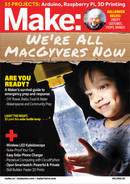
numbers of large orders, and definitely not large
numbers of small orders! What we need is a
way for, say, the Ministry of Health in a country
to place an order for 200,000 items that can be
made in 200 locations near where these items
are needed, with each maker/manufacturer
producing around 1,000 of the total — and all
under a single header contract. Such an approach
wouldn’t need mass manufacturing. It needs
what I call massive small manufacturing.
Since 2015, I have been part of a community
that is building what we now call the Internet of
Production.
The World Wide Web has connected people
to find, make, and share their ideas, data,
knowledge, and software. The Internet of
Production will connect people to find, make, and
share their designs, machines, know-how, and
hardware.
While most “Industry 4.0” initiatives are
focused on efforts within factories, within vertical
supply chains, or on customization within mass
production, the Internet of Production would
connect between. And it will reach further than
globalized supply chains have been able to reach
(perhaps because small, remote, or poorer areas
just aren't viable markets for mass production).
Remember that to really compete, it’s the price
the consumer pays that matters — known as the
total landed cost. So even if the production cost
of a locally made item is higher, local makers
and manufacturers can still compete because of
the often enormous cost of the supply chain for
mass-produced items. The Internet of Production
aims to bring down the cost of distributed local
manufacturing at scale to something with zero
marginal transaction cost when compared to
traditional supply chains.
The concept draws upon recent examples,
ranging from systems used by makers across
France to make millions of items of PPE during
the pandemic, to the work of a humanitarian
innovator working with small and medium
enterprises (SMEs) in Bangladesh to a U.S.-
Kenyan company focused on commercial 3D
printing networks in secondary cities. It also
draws upon pilots that I was involved in with Field
Ready in Kenya and Iraq.
Open Standards
The Internet of Production is being built by an
alliance of people and organizations who share
these ideas, and who are already helping to make
parts of it a reality. Rather than duplicating the
work of our members, the Internet of Production
Alliance is creating the common language
that’s needed to build the network. To make
anything, you need: People & Skills, Designs &
Documentation, Machines & Tools, Materials &
Components, and Contracts & Business Models.
So we are developing open standards in each of
these areas to help our community connect.
The first open standard improves the
discoverability of hardware designs online.
Dubbed “Open Know-How,” anyone can use
it to create meta-data about their designs so
that others can find them more easily online,
regardless of how they publish designs on the
web. A search engine for hardware designs is
being developed. The standard is now moving
on to issues of portability and interoperability
41
make.co
GULU, UGANDA: Takataka Plastics in central Uganda
was one of thousands of local manufacturers mapped
to the Open Know-Where standard by Field Ready’s
teams as part of its response to the Covid-19 pandemic.
This innovative recycling company had the capability
to injection-mold thousands of protective visors using
molds and machines based on open hardware designs.
Field Ready
M82_038-43_SS_Emergence_F1.indd 41M82_038-43_SS_Emergence_F1.indd 41 7/11/22 1:45 PM7/11/22 1:45 PM
..................Content has been hidden....................
You can't read the all page of ebook, please click here login for view all page.
